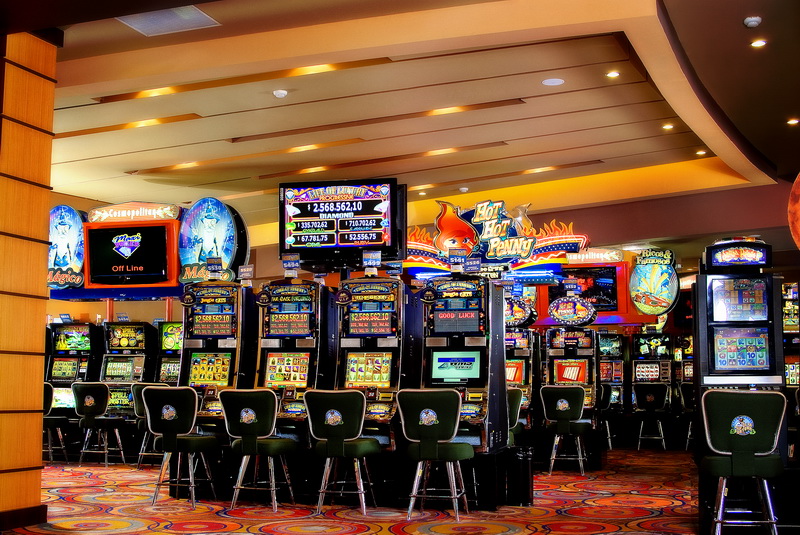
Casino games have long captivated the human imagination, drawing participants into a world filled with chance, strategy, and the allure of adventure. Each activity is meticulously crafted not just for enjoyment, but also to evoke targeted emotional responses that keep participants involved and committed. Understanding the motivations behind these designs reveals much about how behavioral psychology plays a key role in the gaming experience.
From the bright lights and dynamic sounds to the complex layering of rules and incentives, casino games are designed to create an atmosphere of anticipation and eagerness. Game designers leverage psychological principles to influence gambler behavior, whether through the use of jackpots, almost wins, or community engagement. By examining these factors, we can better appreciate how casino games fulfill not just a want for entertainment, but underlying psychological needs for adventure and hazard.
Understanding Player Behavior
Casino games are designed with a profound grasp of player psychology, which is essential for attracting and holding players. The excitement of the game, coupled with the hope of winning, establishes a powerful allure. Game designers utilize elements like audio cues, dynamic graphics, and engaging gameplay to capture attention and generate emotional responses. These sensory elements enhance the immersive experience, making players feel more attached in the game.
Another significant aspect of player behavior is the idea of risk and reward. Casino games often manage high-stakes situations with the potential for substantial rewards, which can cause the phenomenon known as near-miss experience. When players come within reach to winning, the brain produces dopamine, reinforcing their behavior and prompting them to keep playing in search of that hard-to-reach win. This cycle of wish and disappointment plays a key role in how games are designed and promoted.
Lastly, social elements also play a critical role in player behavior at casinos. Many games are designed to be played in groups or with other players, creating a sense of community and communal experience. The interaction inherent in games like blackjack enhances enjoyment and can result in extended gameplay. Designers leverage on this by creating environments that encourage players to linger, interact, and revisit, making the overall casino experience more attractive.
The Role of Imagery and Sound
Visuals and sound play a crucial role in elevating the player’s experience within gambling games. Designers utilize bold colors, eye-catching graphics, and engaging animations to capture players’ attention and sustain their focus. The use of themes, such as exploration or opulence, helps create an immersive atmosphere that takes players into another world. By connecting to the senses, these elements contribute to a intensified emotional response, encouraging players to engage more profoundly with the games.
Audio design is just as important in reinforcing the overall experience of casino games. non GamStop betting The combination of background music, audio effects for winning combinations, and ambient noises creates an sound landscape that holds players enthralled. Sounds associated with victories, such as ringing bells or celebratory music, evoke feelings of excitement and satisfaction, prompting players to keep playing. These audio cues are carefully placed to amplify the excitement of the game and create a more immersive experience.
Additionally, the alignment of visuals and audio is crucial for supporting the game’s overall concept and mood. Each element should coordinate harmoniously to create a unified experience that draws players in. The effective use of this integration not only enhances user satisfaction but also increases the likelihood of repeat play, as players become more invested in the captivating world that the gambling games offer. This thoughtful combination of visuals and audio ultimately enhances player involvement and commitment.
Reward Systems and Engagement
The design of casino games heavily relies on incentive structures to ensure players involved and returning for more. These systems are based in behavioral principles that take advantage of human behavior and motivation. Participants are often driven by the thrill of success, which is supported by instant feedback through the game’s mechanics. This prompt satisfaction not just enhances the gaming experience but also cultivates a feeling of achievement, prompting participants to continue participating in hopes of greater gains.
Casinos utilize various incentive systems, including jackpots, bonuses, and increased rewards, to engage players. These features create a layer of thrill that maintains interest. Additionally, the randomness of results plays a crucial role in sustaining interest. The intermittent reinforcement schedule, where wins are unpredictable but happen often enough, keeps players on edge and driven to keep playing. This loop of hope and expectation is foundational to the success of casino games.
Moreover, social elements, such as tournaments and collaborative options, boost the engagement factor by tapping into the competitive nature of players. The shared experience of playing with others can intensify the excitement of success and create a sense of community within the gaming space. By integrating these community elements with effective incentive structures, gambling experiences not only offer entertainment but also nurture a stronger bond among participants, reinforcing their loyalty to the gaming experience.
